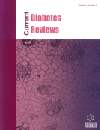
Full text loading...
We use cookies to track usage and preferences.I Understand
The increasing specialization and dispersion of healthcare systems have led to a shortage of resources to address comorbidities. Patients with coexisting mental and physical conditions are disadvantaged, as medical providers often only focus on the patient's mental illness while neglecting their physical needs, resulting in poorer health outcomes.
This study aimed to shed light on the systemic flaws in healthcare systems that contribute to suboptimal health outcomes in individuals with comorbid diseases, including depression and diabetes. This paper also discusses the clinical and economic benefits of collaborative methods for diagnosing and treating depressive disorders in primary care settings.
A comprehensive literature review of the relationship between depression and diabetes was conducted. The outcomes of the literature review were carefully analyzed. Several databases were searched using keywords such as “diabetes,” “depression,” “comorbidity,” “prevalence,” “epidemiology,” and “risk factors” using Google Scholar and PubMed as search engines. The review and research papers written between 1961 and 2023 were our main focus.
This study revealed improved depressive symptoms and better blood sugar and blood pressure control. Additionally, individuals with comorbid depression and diabetes have higher direct and secondary medical costs. Antidepressants and psychological interventions are equally effective in treating depressive symptoms in patients with diabetes, although they have conflicting effects on glycemic control. For individuals with comorbid diabetes and depression, clear care pathways, including a multidisciplinary team, are essential for achieving the best medical and mental health outcomes.
Coordinated healthcare solutions are necessary to reduce the burden of illness and improve therapeutic outcomes. Numerous pathophysiological mechanisms interact with one another and may support the comorbidities of T2DM, and depressive disorders could exacerbate the course of both diseases.

Article metrics loading...

Full text loading...
References


Data & Media loading...

